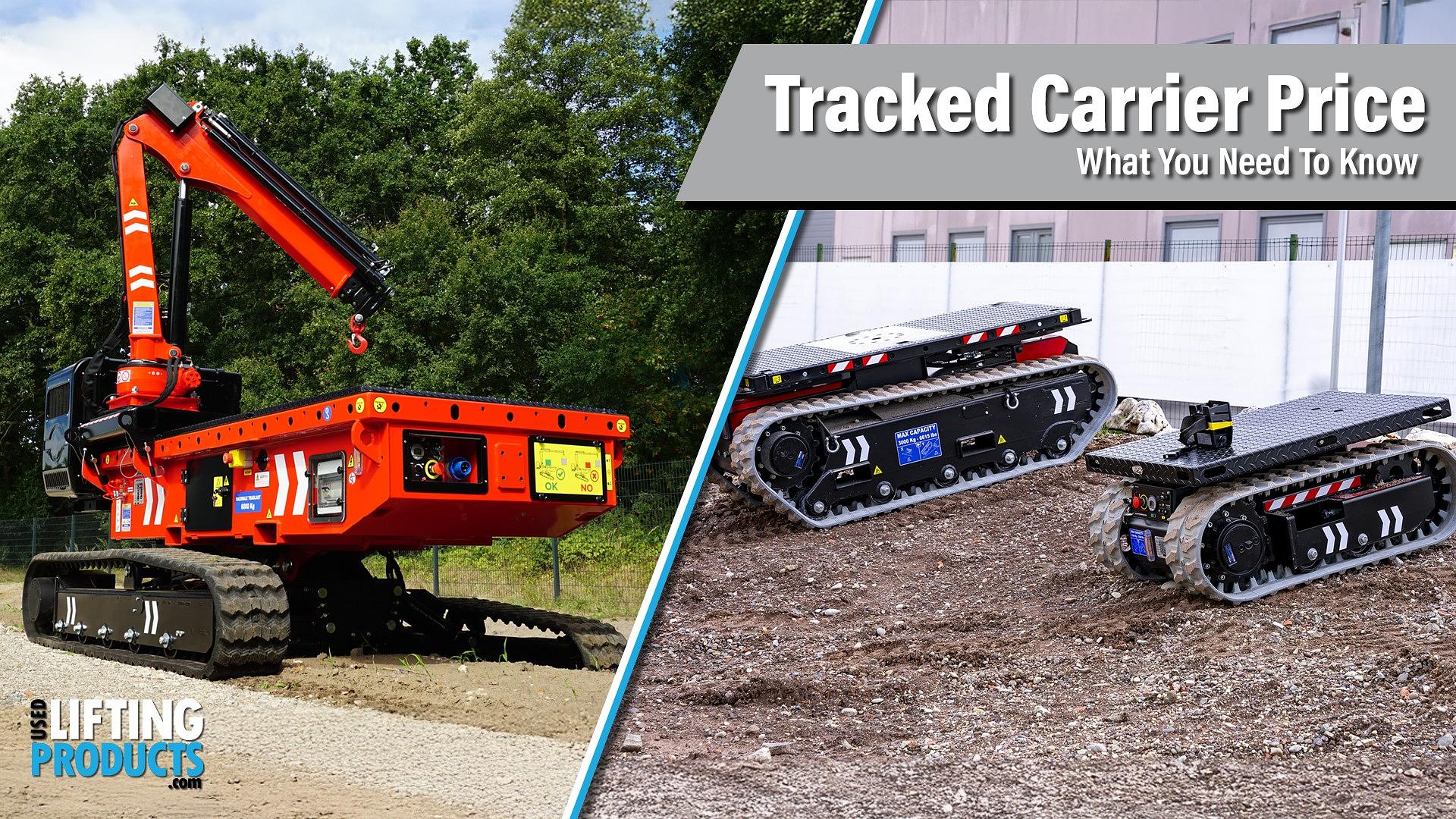Tracked Carrier Price: What You Need To Know
When moving heavy loads across challenging terrain, understanding the tracked carrier price is essential to making the right investment. Tracked carriers and tracked levellers offer versatile and efficient solutions for projects where stability, precision, and terrain adaptability are crucial, such as construction sites, landscaping, and industrial applications. If you're considering adding one to your fleet, knowing the factors that affect pricing can help you make an informed decision.

What Are Tracked Carriers?
Tracked carriers are material transporters with sturdy tracks instead of wheels designed to carry loads over rough terrain. These tracks distribute the carrier's weight more evenly, reducing ground pressure and allowing the machine to traverse uneven or soft surfaces like mud, gravel, and snow. Tracked carriers can handle a variety of load capacities, making them suitable for transporting construction materials and heavy equipment in challenging environments.
Key Features Affecting Tracked Carrier Price
- Load Capacity: Higher-capacity models generally come with a higher price tag due to their ability to carry more substantial loads. This feature is essential if you’re handling heavy materials on a regular basis.
- Engine Power: More powerful engines offer better performance but can increase costs. If your projects involve steep inclines or difficult terrain, investing in a more powerful model might be worthwhile.
- Charge Time/Battery Type: Electric tracked carriers are gaining popularity for their eco-friendliness and lower operating costs. The type of battery (AGM or LTH) and the charge time can significantly affect the price. Lithium-ion batteries, known for their longer lifespan and faster charging, usually come at a premium.
- Model Year and Hours Used: Newer models typically feature advanced technology and improved performance, which can lead to higher prices. Additionally, the number of hours a tracked carrier has been used will impact its price—machines with fewer operating hours tend to be priced higher due to less wear and tear.
What Are Tracked Levellers?
Tracked levellers are different from tracked carriers because their beds have an automatic self-levelling ability. This feature keeps loads horizontal while travelling up slopes or over rough terrain, ensuring stability and safety. Tracked levellers are often used for precise load positioning at construction sites. Compact in size with a significant lifting capacity makes them ideal for delivering loads that traditional cranes cannot reach.
Factors Influencing Tracked Leveller Prices
- Levelling Precision: Models with advanced self-levelling systems for increased stability will typically cost more but offer greater control and safety.
- Lift Capacity: Just like with tracked carriers, higher lift capacities come at a premium. Consider your typical project requirements when deciding on the necessary lift strength.
- Power Options: Tracked levellers are available with different power configurations, such as electric, diesel, or hybrid models, to suit specific indoor or outdoor applications.
- Model Year and Hours Used: Similar to tracked carriers, the age of tracked levellers and the hours they have been used will affect their pricing. Newer models with fewer hours are generally more expensive due to their enhanced features and reduced wear.
Contact Used Lifting Products for Tracked Carrier Prices
The cost of tracked carriers and tracked levellers can vary significantly depending on the features and specifications you require. To get a more accurate understanding of tracked carrier prices and find a model that meets your needs, contact Used Lifting Products for expert advice, stock levels and current pricing information.
